Yellowtail Teriyaki, or Buri no Teriyaki, is a classic Japanese grilled fish with a delicious glaze of homemade teriyaki sauce. It‘s also a popular main dish to enjoy as part of Osechi Ryori, or traditional Japanese New Year foods.
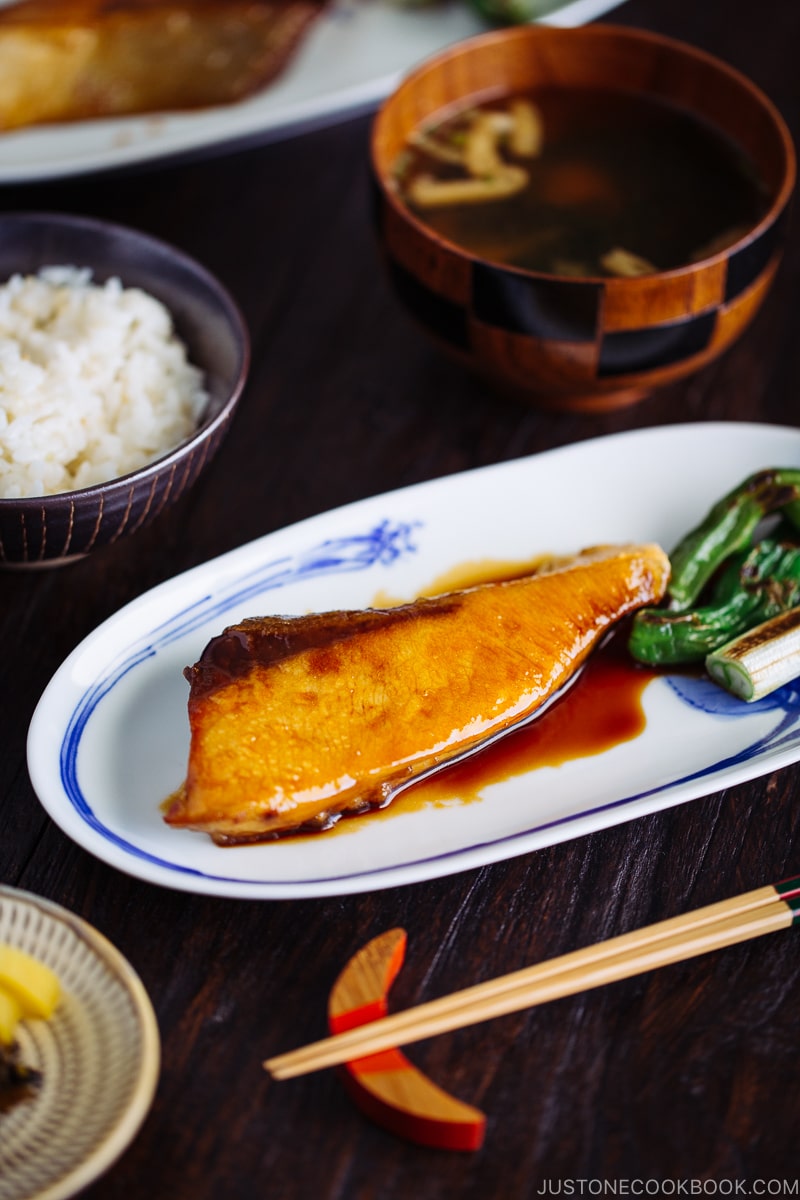
When you go to your favorite Japanese restaurants, have you seen Yellowtail Teriyaki on the menu? Probably not since Salmon Teriyaki and Yellowtail Collar (Hamachi Kama) are generally more popular menu items than yellowtail teriyaki. You may be surprised that’s not the case in Japan. Yellowtail Teriyaki, or what we call Buri no Teriyaki (ぶりの照り焼き) in Japanese, is a staple dish in Japan households.
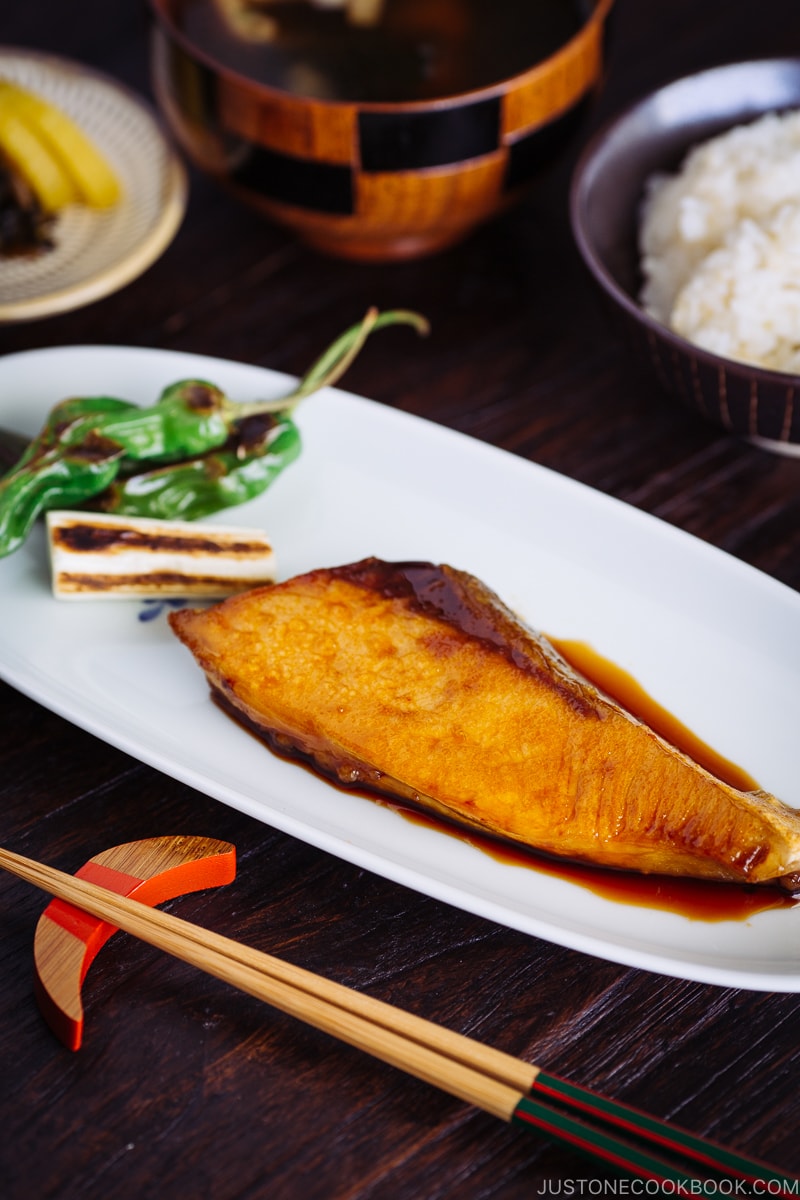
Yellowtail – A Fish with Many Names
Japanese love seafood, so we can get very detailed with our naming. A good example is Yellowtail – a fish that changes names as it grows. Traditionally, there were different names for wild yellowtail, according to size and age, and to make things more complicated, there were also different names between Tokyo and Osaka:
Age (Length) – Tokyo / Osaka name
- 6 months (10 cm) – Wakashi / Tsubasu
- 1 year (30 cm) – Inada / Hamachi
- 3 years (60 cm) – Warasa / Mejiro
- 4 years (90 cm) – Buri / Buri
If you think that’s hard to remember, it’s become even more confusing. Japanese differentiate yellowtail now by:
- Farm / Small – Hamachi (not as much exercise for the fish, hence fatty with soft muscles and lighter colored flesh)
- Wild / Large – Buri
And of course exceptions…
- Wild / Small – Hamachi (Firmer flesh and darker color)
But let’s keep this simple so you can remember when you’re eating out or shopping. In general, the yellowtail “Hamachi” used for sushi and sashimi in the US and Japan is farmed. The larger, older, wild yellowtail “Buri” are caught in the fall in the Japan Sea. This seasonal Buri is called Kanburi (寒鰤) and it is nice and oily, and has so much flavor. It’s enjoyed during fall/winter time in Japan, so Buri no Teriyaki is common during this time.
One more note: the English term for Hamachi is “yellowtail”, and Kanpachi is “amberjack”. However, because yellowtail can also be called “Japanese amberjack”, a lot of people think they are the same fish.
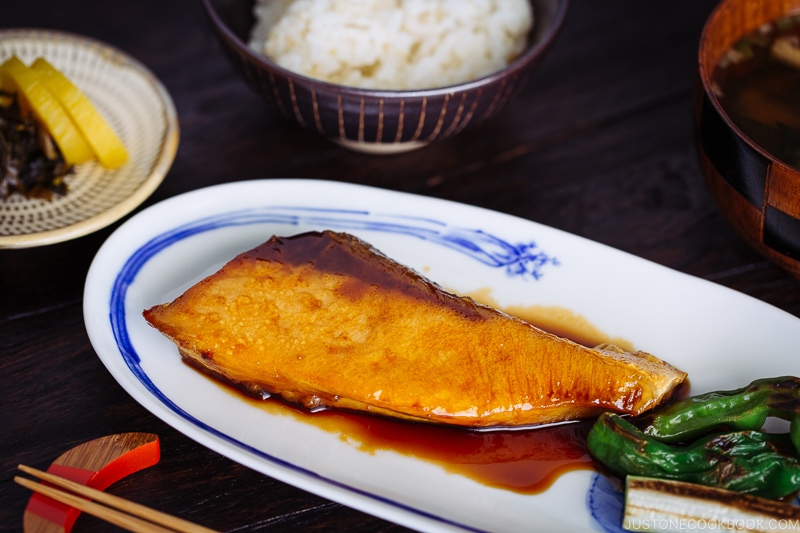
Why Salt the Fish Before Cooking?
Don’t avoid sprinkling salt just because the Teriyaki Sauce is “salty” enough. Salt plays an important role in prepping, and here’s why.
Adds Umami
The protein itself has no taste. Sprinkling on salt will cause the proteolytic enzyme to kick in and the protein will change to glutamic acid or a delicious amino acid – the umami flavor!
Remove Fishy Smell
After leaving the salted fish for 10 minutes, the fish releases excess moisture, which also contains an unwanted fishy smell. Simply wipe off the excess moisture with a paper towel and the final dish will not have that fishy smell.
If you are using defrosted fish, it’s not as fresh hence the fish might have a stronger fishy smell. In that case, leave the salt on for a little longer, about 15-20 minutes.
Remove Excess Moisture
As some moisture is withdrawn, the flesh is firmer and more elastic, and it’s less likely the flesh is broken into pieces.
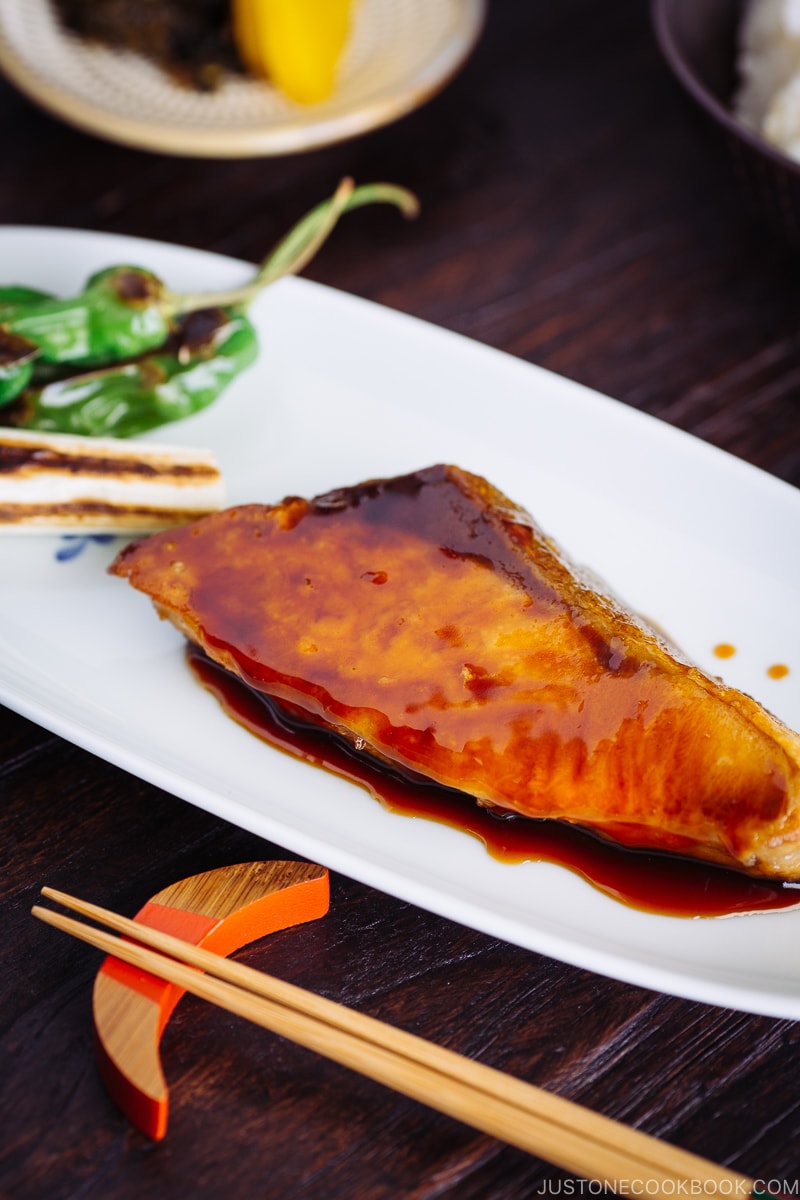
Why Do We Coat The Fish with Flour?
I occasionally receive questions on coating fish and meat with flour, so here are some reasons why it is important.
1. Prevents the fish from breaking apart
When seared on the frying pan, the fish coated with flour holds together stronger, which protects it from breaking apart.
2. Gives a crispy texture
When coated with flour, the surface develops a nice crispy texture when cooked. It makes it so delicious!
3. Adds a toasty flavor and aroma
The burnt/charred flour adds an extra toasty flavor.
4. Locks in the fat, juice, and umami
The flour acts as a protective barrier and sponge, preventing the umami from leaving the fish.
5. Thickens the pan sauce
As you cook the coated fish in the sauce, the flour slowly dissolves and creates a beautiful, thicker sauce.
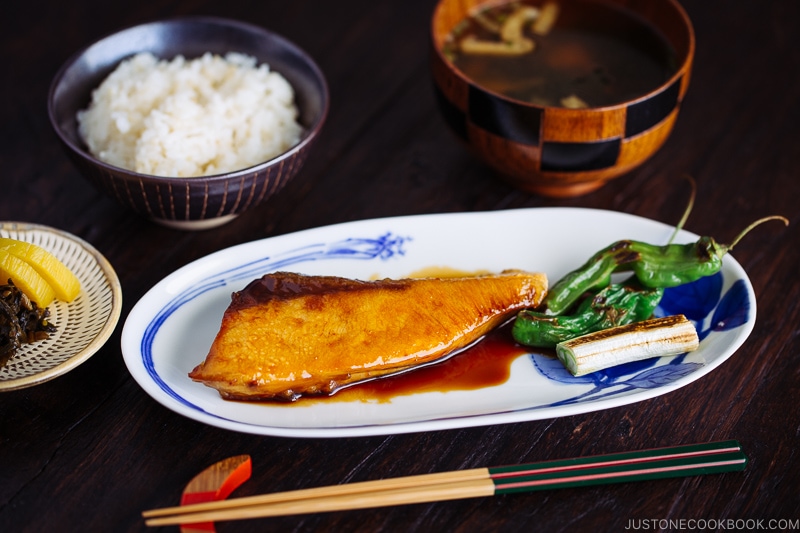
Simple enough to make on a weeknight yet elegant enough for company, Yellowtail Teriyaki pairs well with pan-grilled vegetables like Negi (long green onion) and shishito peppers. Serve along with steamed rice and miso soup, and you’d have a delicious meal at dinner.
Wish to learn more about Japanese cooking? Sign up for our free newsletter to receive cooking tips & recipe updates! And stay in touch with me on Facebook, Pinterest, YouTube, and Instagram.
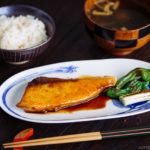
Yellowtail Teriyaki
Video
Ingredients
- 2 fillets yellowtail (hamachi, buri) (7.8 oz, 220 g)
- 1 tsp Diamond Crystal kosher salt
- 1 Tbsp all-purpose flour (plain flour)
- 1 Tbsp neutral oil
For the Garnish (optional)
- 1 Tokyo negi (naga negi; long green onion) (white part only)
- 4 shishito peppers
Instructions
Before You Start…
- If you will include this dish in your Osechi meal, I recommend cooking it up to a day before you plan to serve. For more helpful tips on planning your Japanese New Year feast, please read my A 5-Day Osechi Cooking Timeline blog post.
- Gather all the ingredients.
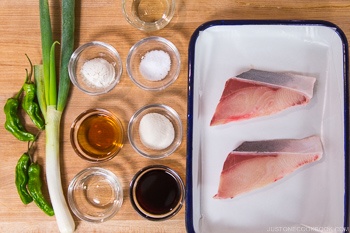
To Prepare the Garnish (optional)
- Cut the white part of 1 Tokyo negi (naga negi; long green onion) into 2-inch (5-cm) pieces. You will need one piece per serving. Make small slits or holes in 4 shishito peppers by poking the skin with a knife tip.
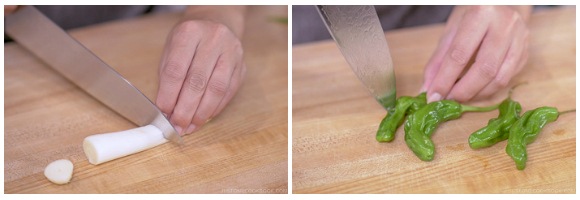
- Heat a large frying pan and dry roast the negi and shishito peppers (without applying any oil). When they achieve a nice char, transfer to a plate and set aside.
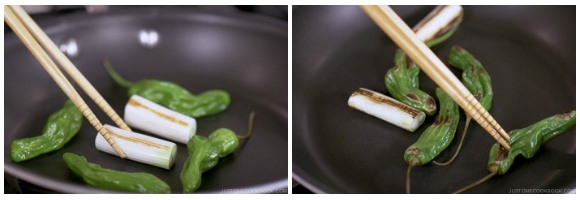
To Make the Yellowtail Teriyaki
- In a bowl, combine the seasonings for the teriyaki sauce: 2 Tbsp sake, 2 Tbsp mirin, 2 Tbsp soy sauce, and 1 Tbsp sugar. Whisk it all together.

- Sprinkle 1 tsp Diamond Crystal kosher salt on both sides of 2 fillets yellowtail (hamachi, buri) and let it sit for 10 minutes. Then, pat it dry with a paper towel.
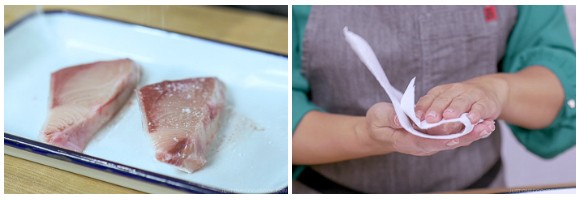
- Coat all sides of the fish with 1 Tbsp all-purpose flour (plain flour) and remove the excess flour.
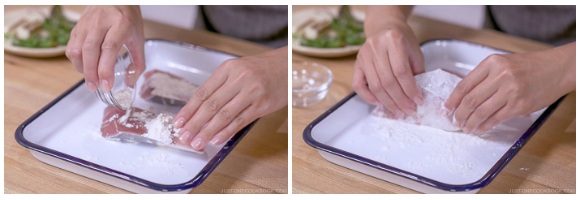
- Heat 1 Tbsp neutral oil in the frying pan over medium heat. Once the pan is hot, sear the fish skin for 15 seconds or so by pressing down on the pan. Then, place the fish “front“ side down and cook until nicely seared, about 2–3 minutes. Tip: This front side of the fish will face up on the serving plate.
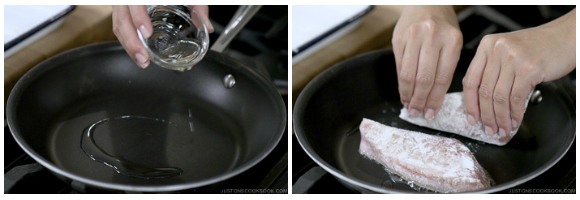
- Flip the fish over and cover the pan with a lid. Lower the heat a little bit and cook for an additional 1–2 minutes.
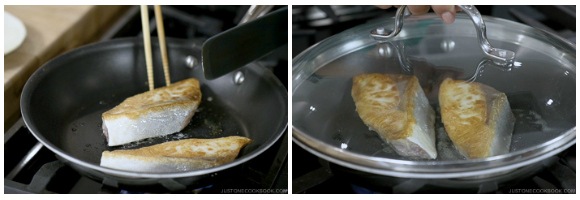
- Remove the lid and wipe off the excess oil in the frying pan. Pour the teriyaki sauce into the pan.
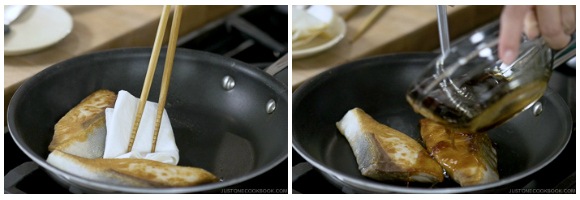
- Spoon the sauce over the fish while the sauce is thickening. Do not flip over the fish as it can break down and fall apart. Tilt the pan if necessary to scoop the sauce with a spoon. Once the sauce gets syrupy, turn off the heat.
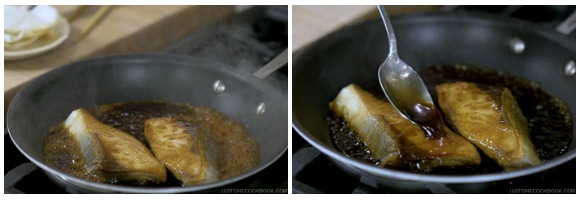
To Serve
- Transfer the Yellowtail Teriyaki to individual serving plates “front“ side up. Drizzle the sauce over the fish. Garnish with the grilled negi (optional) and shishito peppers (optional) on the side. If you‘re serving this as part of your Osechi meal for Japanese New Year, cool it completely before packing it into a jubako (3-tiered box).
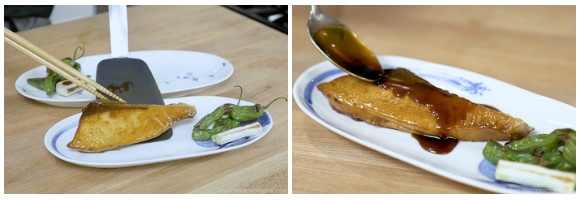
To Store
- You can keep the leftovers in an airtight container and store in the refrigerator for 1 day and in the freezer for a week.
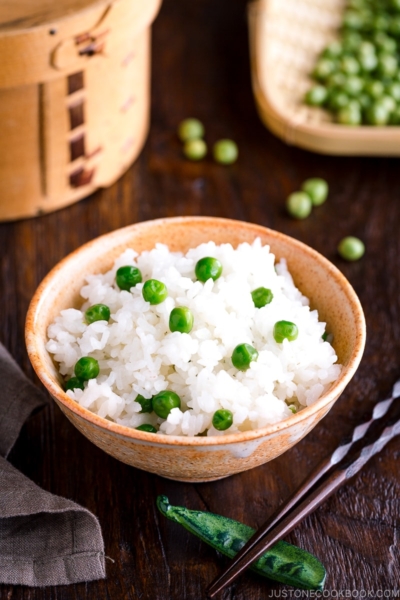
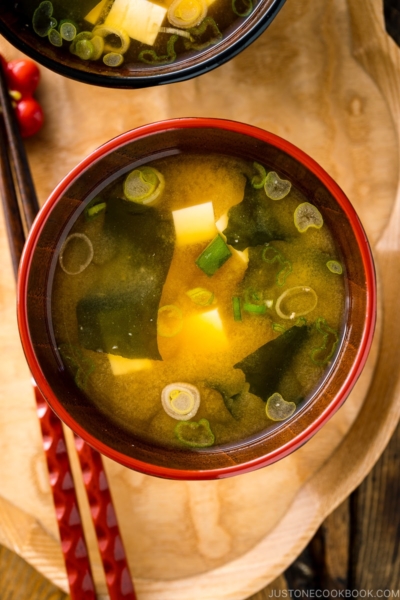
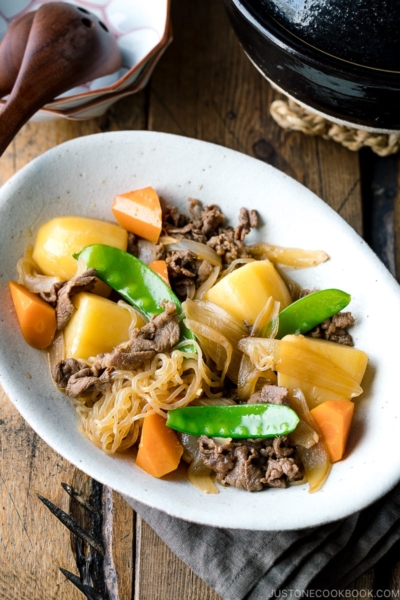
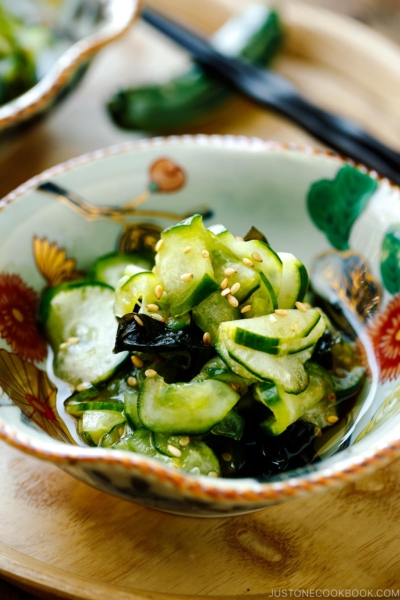





I always enjoy watching your videos which are so thoughtfully put together, and to trying out your recipes. They never disappoint! Bravo. Please keep up your excellent work 👍👍👍, Chef Nami!
Hi, Yvonne! Thank you very much for your nice words and kind note to Nami!
We are delighted to hear that you appreciate her recipes, videos, and everything else we have shared with you.
We hope you will continue to enjoy cooking with us. Thank you so much for your love and support! 🤗
For gluten free cooking, can potato starch be used to coat the fish instead of flour?
Hi Doris! Thank you for trying Nami’s recipe!
Yes. Potato starch can be used as a substitute.
We hope this helps!
Perfection! So simple and so lovely. I had no peppers so I skipped the garnish. Other than that I stuck to the recipe. Although with every step I used the lower of the suggested cooking duration, I think next time I will already do the wipe/glaze when using the lid and shorten the time. But then this was my first time cooking yellowtail……
Thank you so much for the detailed description of each steps – so super clear! And the pictures help so much in making the steps stick (so I don’t keep on having to go back and check what I need to do next.) The work you put into all this really is appreciated!!!
Hi, afra! Thank you very much for trying Nami’s recipe and sharing your cooking experience with us.
We are so happy to hear you enjoyed yellowtail the first time!☺️
I used fresh barracuda. I also chose to put a little more brown sugar this time. super good
Hi James! Thank you very much for trying Nami’s recipe and sharing your cooking experience with us!
We are glad to hear it worked well with barracuda!🤩
I made this tonight – we loved the recipe. Thank you for teaching me the flouring technique – it is a real game changer. Hope to make this soon again.
Hi Alice! Yay! We are so happy to hear Nami’s technique made a big difference!
Thank you very much for following her recipe and for your kind feedback. Happy Cooking!
I tried this out with frozen yellowtail and it was a big hit. One additional step I improvised was to marinate the fish with some grated ginger juice before pan-frying. Not only did it tone down the fishy odor it also added a zing to each bite. And since I didn’t have sake, I used soju in the sauce. Thanks Nami, for sharing this detailed recipe! I’ll be making yellowtail teriyaki again, and maybe with fresh tuna too.
Hi Kaybee85! I’m so glad you enjoyed this recipe! Thank you so much for your feedback!
I followed your recipe for the fish but cooked a different fish available here in India – no yellowtail here – a bekti fish fillet. It has become a firm favourite at home – delicious and quick !
I really appreciate your detailed discussion of the why of technique
It helps me apply the same when I am cooking other fish dishes too .
Thank you for your wonderful site.
I hope to try other recipes from here soon.
Hi Sujatha! I’m so happy to hear you enjoyed this recipe and thank you very much for your kind feedback. Glad you found a good alternative fish to cook in India! 🙂
This is my favorite dish that my obachan cook for me back when she was alive. She was a cook in Japan and from her side dishes to main even just her tamagoyaki was so good. Thank you for sharing lots of traditional japanese recipes. My grandma died suddenly and she was only able to pass down a few recipes of her to me. So, your blog helps me a lot when I’m craving for something. Thank you, Namisan! Keep up the good work!
Hi Kei! You’re so lucky to taste her delicious dishes when she was cooking for you. Don’t worry, you will not forget her taste and I hope you can get to adjust my recipes to her taste one day! Thank you for your encouraging words. xoxo